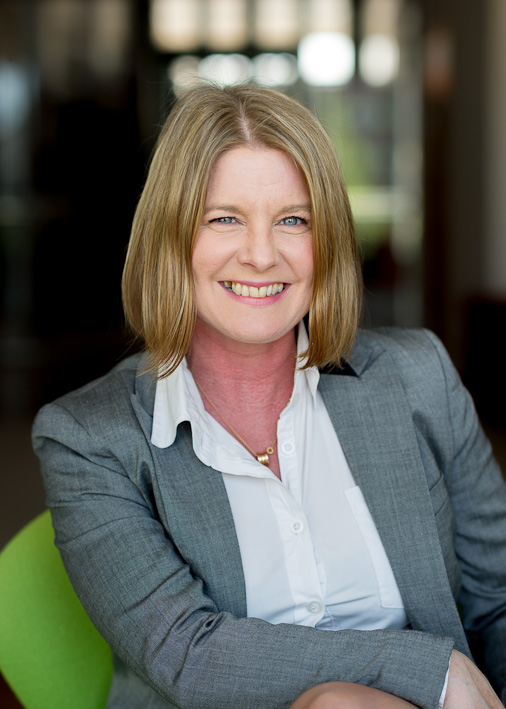 Meet Anette Andersson, Fund Manager & ESG Investment Specialist at SEB Investment Management, one of the largest asset managers in Scandinavia. When I met Anette at a responsible investment event in 2012, I was intrigued by the story of how she – and SEB – got started with responsible investment. I was glad to reconnect with her recently for this interview and to capture her thoughts on interdependency, translation and innovation.
Meet Anette Andersson, Fund Manager & ESG Investment Specialist at SEB Investment Management, one of the largest asset managers in Scandinavia. When I met Anette at a responsible investment event in 2012, I was intrigued by the story of how she – and SEB – got started with responsible investment. I was glad to reconnect with her recently for this interview and to capture her thoughts on interdependency, translation and innovation.
Interlinked human and natural resources
 As people and companies, we are so dependent on natural resources. Unfortunately, this isn’t always top of mind when buying food or clothes, neither when we make investment decisions. Too often, you simply do not know whether a product, a brand or a company creates value – or destroys it. As humanity, we need a more holistic approach on value and value creation. This doesn’t just apply to natural resources, but also to human resources, as this is all interlinked. Take the textile industry in Bangladesh for example. The national economy and the Bangladeshi people are very dependent on the fashion industry. If not managed well, the fashion industry contributes mostly financially, at the expense of clean water for all and with terrible working conditions within the industry. That’s why I’m active on the advisory board of GLASA, an award set up to inspire bold and courageous leadership in the apparel sector.
As people and companies, we are so dependent on natural resources. Unfortunately, this isn’t always top of mind when buying food or clothes, neither when we make investment decisions. Too often, you simply do not know whether a product, a brand or a company creates value – or destroys it. As humanity, we need a more holistic approach on value and value creation. This doesn’t just apply to natural resources, but also to human resources, as this is all interlinked. Take the textile industry in Bangladesh for example. The national economy and the Bangladeshi people are very dependent on the fashion industry. If not managed well, the fashion industry contributes mostly financially, at the expense of clean water for all and with terrible working conditions within the industry. That’s why I’m active on the advisory board of GLASA, an award set up to inspire bold and courageous leadership in the apparel sector.
Demystifying sustainability
 The financial sector has a unique role to play in driving change to a more balanced approach to value creation. By including environmental, social and governance (ESG) factors into investment criteria, investors can not only help to create value for society and the planet, but also generate better returns. In order for financial market players to get involved, we do need to demystify sustainability; we need to make it less fluffy to make it relevant and understood in the investment context. It’s really a language issue: sustainability and investment professionals seem to speak different languages. To make sustainability “speak” to investment managers, it needs to be translated to risks and numbers.
The financial sector has a unique role to play in driving change to a more balanced approach to value creation. By including environmental, social and governance (ESG) factors into investment criteria, investors can not only help to create value for society and the planet, but also generate better returns. In order for financial market players to get involved, we do need to demystify sustainability; we need to make it less fluffy to make it relevant and understood in the investment context. It’s really a language issue: sustainability and investment professionals seem to speak different languages. To make sustainability “speak” to investment managers, it needs to be translated to risks and numbers.
Swedish church as a catalyst for change
For me, the journey to include ESG factors into my investment decisions came from the Church of Sweden. When they became a new customer in 2006, they asked us to actively engage the companies in which they invested on sustainability topics. We started off with exclusions and after two years, we progressed to positive screening and inclusions, to increase the positive impact of their assets. I am so grateful for the opportunity to work for them.  It has really made me think about value creation in new ways and has helped me build new skills, which are so relevant for the future.
It has really made me think about value creation in new ways and has helped me build new skills, which are so relevant for the future.
Bold and inspiring leadership to make change happen
In times of turbulence and rapid change, bold and inspiring leadership is needed, to stand firm on the integration of sustainability factors into business. In the case of SEB, both the CEO and the board have shown strong commitment in their communications and actions. In 2008, SEB partnered with the World Bank to create the first Green Bonds. This has been very successful for SEB,. Commercially, Green Bonds have done well. As we were the first to issue them, they have also opened doors to new clients that otherwise would have been closed to us as a relatively small Swedish bank. And last, but not least, they also fostered stronger collaboration between departments in our company and in the companies issuing the Green Bonds.
The jigsaw puzzle of life
 Before the Swedish Church pushed me to integrate sustainability into my investment practices, I was already integrating it into my daily life – like recycling the garbage. But I had not made the connection between sustainability and financial markets. When I started ESG integration at work ten years ago, people thought it was really strange and felt that I was asking really odd questions. So much has changed already. Now a more holistic assessment is much more common; people understand we need to see both sides of the coin. There’s the short-term financial side; and the longer term sustainability side, that in the end will translate into future financial returns. A more holistic assessment makes it all fit together, like a jigsaw puzzle. I hope that in ten years time, sustainability is so well incorporated into the business that my role as a sustainability professional is no longer necessary. Sustainability can’t be an isolated department; it should be part of everyone’s job.
Before the Swedish Church pushed me to integrate sustainability into my investment practices, I was already integrating it into my daily life – like recycling the garbage. But I had not made the connection between sustainability and financial markets. When I started ESG integration at work ten years ago, people thought it was really strange and felt that I was asking really odd questions. So much has changed already. Now a more holistic assessment is much more common; people understand we need to see both sides of the coin. There’s the short-term financial side; and the longer term sustainability side, that in the end will translate into future financial returns. A more holistic assessment makes it all fit together, like a jigsaw puzzle. I hope that in ten years time, sustainability is so well incorporated into the business that my role as a sustainability professional is no longer necessary. Sustainability can’t be an isolated department; it should be part of everyone’s job.
For more information about Anette and SEB, please check out her LinkedIn profile, follow her on Twitter, or check out the sustainability section of the SEB website.
Written by Marjolein Baghuis (@mbaghuis) for Change in Context. To read about other interesting people, book reviews and other posts about leadership, change and sustainability, please subscribe.

RT @MBaghuis: New interview on my blog with @haxan2008 from SEB. She shares her thoughts on interdependency, translation and innov…https://…
New interview on my blog with @haxan2008 from SEB. She shares her thoughts on interdependency, translation and innov…https://t.co/9PYCQrim8X
RT @MBaghuis: Interview with @SEBGroup’s ESG specialist @haxan2008 on my blog: Translation as the key to #ESG integration https://t.co/lsax…
Interview with @SEBGroup’s ESG specialist @haxan2008 on my blog: Translation as the key to #ESG integration https://t.co/lsax82UdxZ